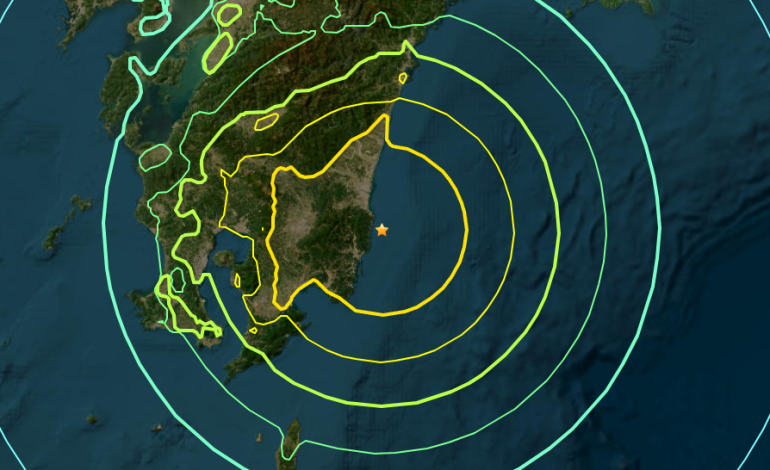A powerful 7.1 magnitude earthquake hit the southern coast of Japan on Thursday, prompting authorities to issue a tsunami advisory for the region, The Indian Express reports.
According to the public broadcaster NHK, the advisory was for several regions in the southwestern Japanese islands of Kyushu and Shikoku.
Initially, the Japan Meteorological Agency said the earthquake registered a preliminary magnitude of 6.9, but it later upgraded the preliminary magnitude to 7.1. The quake was centered off the eastern coast of Japan’s southern main island of Kyushu at a depth of about 30 kilometers, the agency added.
The meteorological agency has predicted waves of up to 1 meter along the southern coast of Kyushu and nearby island of Shikoku.
20-centimetere high waves were observed in Miyazaki prefecture on Kyushu, news agency Reuters said, quoting NHK.
While nuclear plant operators on Kyushu and Shikoku are checking for any damages, the Sendai nuclear plant in Kagoshima prefecture said that no abnormalities have been detected and that operations will continue.
Japan’s geographic location makes it highly susceptible to earthquakes and tsunamis. Situated along the “Pacific Ring of Fire,” the world’s most seismically active zone, Japan sits at the convergence of several tectonic plates, including the Pacific, Eurasian, and Indo-Australian plates. These plates constantly interact, colliding and shifting, generating earthquakes, volcanic eruptions, and the devastating waves known as tsunamis.










The latest news in your social feeds
Subscribe to our social media platforms to stay tuned